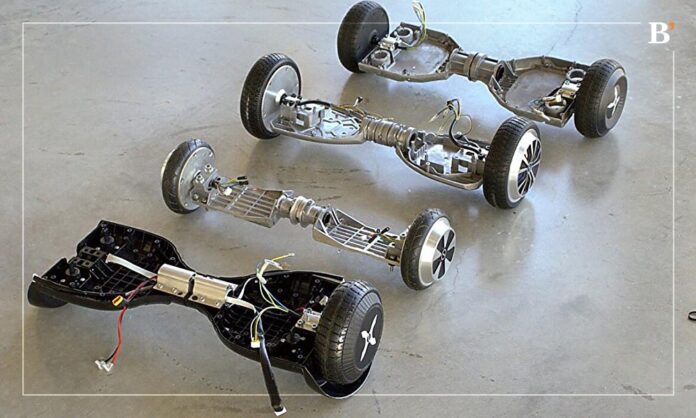Key Highlights
- “Garbatrage” introduces a sustainable framework for prototype builders, repurposing underused devices to reduce electronic waste (e-waste) and foster innovation.
- Cornell researchers, Ilan Mandel and Wendy Ju, emphasize the importance of recognizing the value in seemingly discarded hardware to create more sustainable supply chains and minimize the impact of e-waste.
Ilan Mandel, a robotics researcher at Cornell University, was puzzled by a simple question: how could a brand-new hoverboard be cheaper than the sum of its individual parts? This problem sparked his latest research project, titled “Recapturing Product as Material Supply: Hoverboards as Garbatrage,” which received recognition at the Association for Computing Machinery Conference on Designing Interactive Systems in July. Wendy Ju, an associate professor at the Jacobs Technion-Cornell Institute at Cornell Tech, co-authored the paper.
Unearthing “Garbatrage”: A Sustainable Solution
Mandel’s curiosity was piqued while he scavenged parts from discarded hoverboards to create a fleet of trash robots in New York City. The study introduced the concept of “garbatrage,” a framework for prototype builders focused on repurposing underutilized devices.
By repurposing hoverboards, which experienced a surge in popularity around 2016, Mandel and Ju aim to shed light on the economic factors that enable garbatrage. Their objective is to encourage designers to prioritize material reuse, establish more circular economies and sustainable supply chains, and ultimately reduce electronic waste (e-waste).
- The researchers argue that the time is ripe for practices like garbatrage, particularly in light of global supply shortages and trade issues.
- They believe that most e-waste, from old desktop computers and smartphones to IoT appliances and vaping devices, contains functional components that can be repurposed in prototypes, ultimately driving innovation while reducing e-waste.
Currently, approximately 53 million metric tons of e-waste are generated worldwide each year, with only 20% being properly recycled. The fate of the remaining 80% remains uncertain, with some ending up in developing countries where individuals resort to burning electronics to salvage valuable metals, causing environmental contamination and health risks.
Bridging The Gap: Designers and E-Waste
Mandel emphasizes the role of designers in promoting sustainability by recognizing the value in seemingly discarded hardware. Designers, he believes, can bridge the gap between industrial-scale production and end-users, leveraging e-waste to foster sustainability and reduce the burden on consumers to solely manage their own waste practices.
FAQs
1. What is “garbatrage”?
“Garbatrage” is a framework focused on repurposing underused electronic devices for prototype building, promoting sustainability.
2. Why is “garbatrage” important?
It helps reduce electronic waste (e-waste), encourages circular economies, and minimizes resource wastage in prototype development.
3. How can designers contribute to “garbatrage”?
Designers can prioritize material reuse, sustainable supply chains, and circular economies, reducing e-waste in the process.




